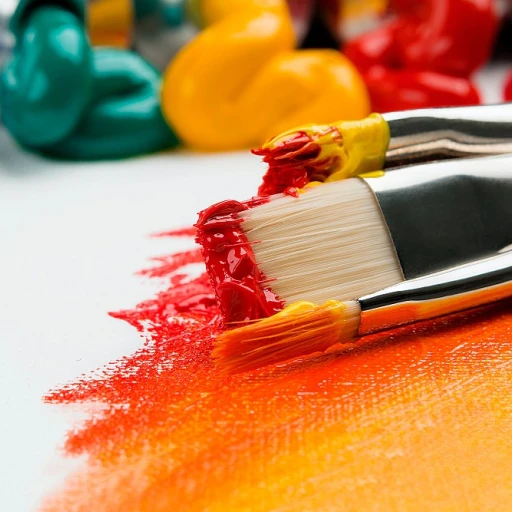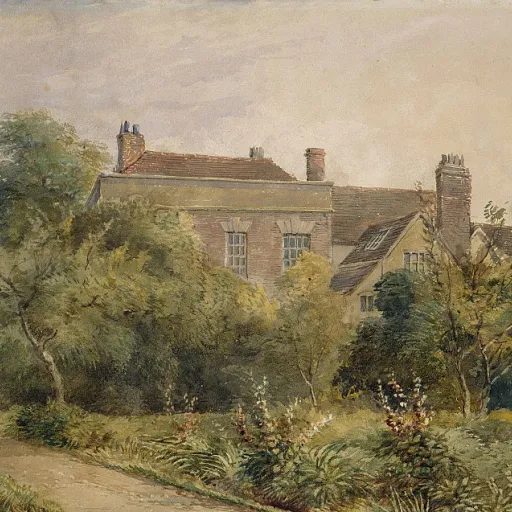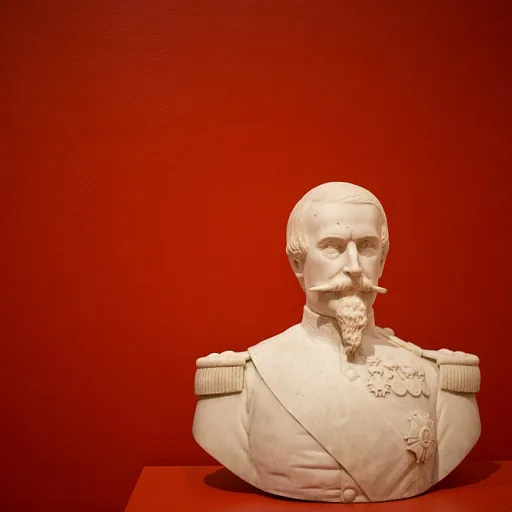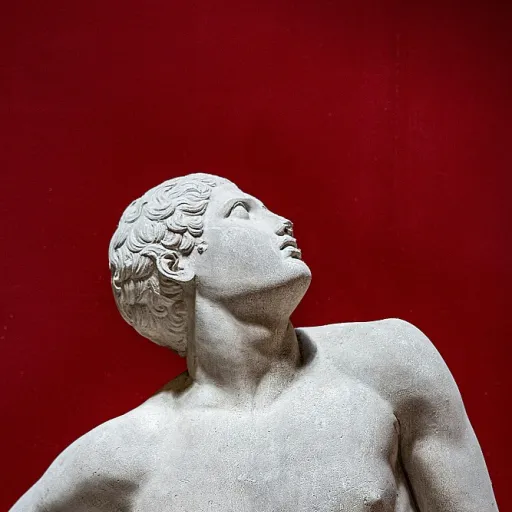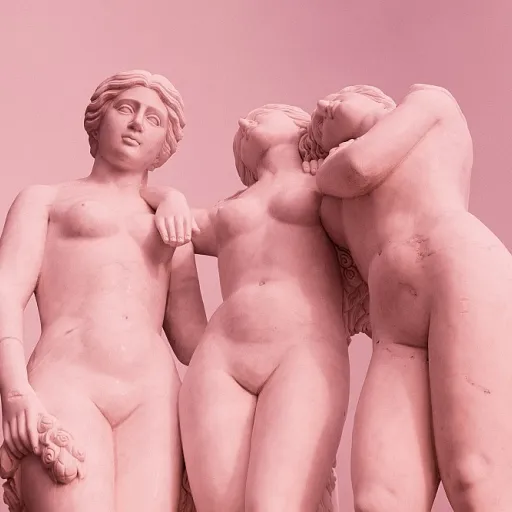-teaser.webp)
The Timeless Appeal of Greek Goddess Sculptures
The Everlasting Charm of Greek Goddesses in Art
The allure of Greek goddess sculptures lies in their timeless beauty and significance, captivating art enthusiasts and collectors worldwide. These sculptures, often depicting deities like Aphrodite, Athena, and Venus, represent a profound connection to ancient Greek mythology and artistic mastery. Crafted with meticulous attention to detail, they offer a glimpse into the cultural and historical context of ancient Greece, cementing their place in luxury art collections today.
The use of diverse materials such as marble and bronze enhances the ethereal quality of these sculptures, each medium adding its unique touch to the portrayal of divine beauty. Marble statues embody the purity and grace of the goddesses, while bronze adds a dynamic and enduring quality. The
From Venus Milo's elegant
As luxury artworks continue to evolve, the allure of Greek goddess sculptures remains unshaken. Art lovers are drawn to their historical significance, stunning craftsmanship, and the stories they embody. Whether on display in a grand collection or a personal sanctuary, these timeless pieces stand as testaments to the enduring beauty of Greek mythology, making each acquisition a coveted treasure.
Craftsmanship and Materials
Artistry in Ancient Times
Greek goddess sculptures embody the pinnacle of ancient craftsmanship, reflecting the diligent art practices of the time. Their creation was not merely about representation, but about capturing the ethereal beauty and divine essence of the goddesses revered in Greek mythology. Crafted from materials such as marble and bronze, these pieces were designed to stand the test of time.
Using marble, artisans achieved unrivaled detail, showcasing their skills in rendering soft, flowing garments and lifelike anatomies. The cool, cold cast surface of marble added a tactile element of realism to the pieces. In contrast, bronze allowed for elaborate sculpture, invaluable for capturing dynamic poses and intricate detail, giving a sense of movement and life to the sculptures.
Adapting Tradition
Through the exploration of their allure, it's clear that the timeless fascination with these ancient creations continues to influence modern interpretations of art. The mixture of durability and aesthetic elegance makes them a sought-after artifact in contemporary collections, as well as featured highlights in sculpture sale events. Whether styled as bold bust statues or more delicate venus milo figures, these statues remain intrinsically linked to the ancient Greek notion of divine beauty and the high price it commands in art markets today.
Iconic Greek Goddesses in Sculpture
Famous Figures Captured in Stone and Bronze
The allure of Greek goddess sculptures is often epitomized by the iconic figures immortalized in both marble and bronze. Recognized for their mythological significance and artistic beauty, these statues represent a celebration of ancient Greek culture, having transcended time to become symbols in the art world. Ancient masterpieces such as the "Venus de Milo," a quintessential depiction of the goddess Aphrodite, stand as a testament to the craftsmanship and the enduring appeal of Greek sculpture. Its exquisite composition in marble showcases not only the grace and beauty of the goddess but also the skill and sophistication of ancient Greek artists. This statue speaks volumes about divine beauty as viewed in Hellenistic times and remains one of the most treasured possessions of any luxury art collection. Another prominent figure in Greek art is the wise Athena, often rendered in statues that capture her strength and wisdom. These sculptures—whether cold cast or crafted from solid bronze—highlight particular attributes associated with the goddess, such as her iconic helmet and aegis. The wisdom of Athena has inspired sculptures that exude power and vigilance, offering significant insights into the values of ancient Greek civilization. These statues aren't just admired for their aesthetic quality; they carry significant cultural weight. Collectors see them as a bridge between the ancient and modern, offering a window into the realm of mythology and bringing a sense of historical richness to contemporary spaces. In addition to physical materials, the significance of a goddess statue is further accented by its historical and cultural implications. Investing in such a piece goes beyond adding to the cart for a simple sculpture sale. It involves engaging with a work of art that embodies centuries of history and mythology, from aesthetically pleasing busts to monumental full-fledged sculptures. For those seeking to own a piece of this legendary past, the importance of selecting the right artwork is paramount. The price of acquiring such statues varies significantly, depending on factors like authenticity, material, and historical provenance. Thus, discerning collectors often look for authenticity and narrative when purchasing these statues, considering it an investment not just in art but in cultural heritage.The Role of Greek Goddess Sculptures in Modern Collections
The Irresistible Charm of Ancient and Modern Convergence
When one thinks of Greek goddess sculptures, an intersecting world of ancient mythology and modern art collections comes to mind. In today's luxury art market, these timeless pieces are often highlights of collections, reflecting not only the profound beauty of ancient Greek art but also the enduring allure of mythology. Collectors prize these sculptures for their historical significance and the craftsmanship involved in their creation. Many of these statues, made from staggering materials like marble and bronze, exemplify a level of skill that transcends time. The goddess statues often depict revered figures such as Aphrodite, Athena, and the Venus de Milo, radiating with beauty and elegance even in contemporary settings. Modern collectors place immense value on these pieces, both for their aesthetic appeal and their rich cultural narratives. These statues are seen as symbols of history, art, and mythology, making them not just assets but also storytelling vessels within a collection. In the world of luxury art, price plays a critical role, and Greek statues command respect and high valuations. While acquisition can be challenging, the successful purchase of an authentic goddess statue enhances a collection’s prestige and tells a piece of the ancient Greek narrative. The allure of Greek goddess sculptures is such that they remain a sought-after commodity. There is a continuous engagement of art lovers willing to add these stars of the ancient world to their collections. The market sees frequent transactions, sales, and auctions where discerning collectors seek these pieces for their unique blend of art and mythology.Challenges in Acquiring Authentic Greek Goddess Sculptures
Navigating the Complexities of Authenticity
Acquiring a genuine Greek goddess sculpture is a pursuit that demands both dedication and diligence. In today’s market, where replicas abound, determining authenticity is a challenge that even seasoned collectors meticulously navigate. The value of a Greek statue isn't solely based on its beauty but heavily influenced by its history and provenance. Statues like those of Aphrodite, often celebrated in ancient Greek mythology, or the iconic Venus de Milo, are highly sought after. However, the marble and bronze that once graced ancient temple grounds are now rare treasures, making due diligence in the verification process paramount. The rise in demand for Greek goddess statues drives a flourishing sculpture sale market—but also increases the presence of counterfeits. For those determined to add a genuine Athena bust to their collection, seeking experts who specialize in ancient art verifications is essential. They provide the necessary insight to distinguish an original from a cold cast replica, ensuring the price aligns with the true value of the piece. Ancient Greek sculptures often require provenance documentation, a recorded path of ownership, to validate authenticity. Engaging with reputable art dealers and auction houses increases the likelihood of acquiring authentic goddess statues. These professionals are adept at tracing the history of a goddess statue and verifying its origin, reducing the risk of investment in inauthentic sculptures. With their storied pasts, sculptures of Greek goddesses embody not just the artistic flair of a bygone era but also the intricate mythology that inspired them. Collectors appreciating the timeless allure of such pieces should balance enthusiasm with caution, ensuring their acquisitions are both genuine and well-cared-for investments. Understanding the challenges and rising above them truly elevates the status of these ancient treasures in modern collections.Preservation and Care of Greek Goddess Sculptures
The Art of Maintaining Greek Goddess Sculptures
When it comes to the preservation and care of Greek goddess sculptures, understanding the intricacies involved is crucial. These sculptures, often crafted from materials like marble and bronze, require meticulous care to maintain their allure and historical significance.- Material Vulnerabilities: Marble, a popular medium for many ancient Greek statues, is susceptible to various environmental factors that can cause deterioration. Acid rain, exposure to pollutants, and temperature fluctuations can all lead to surface damage. Conversely, bronze sculptures face threats from oxidation and the ensuing patina that can obscure the original beauty.
- Expert Restoration: Engaging with experts who specialize in ancient art restoration is vital. These professionals use advanced techniques to clean, restore, and preserve sculptures, ensuring they withstand the test of time while maintaining their authenticity. Restoration isn't just about preserving the statue's visual appeal; it's about conserving the stories and mythology enshrined in each piece.
- Controlled Environment: To safeguard these masterpieces, it's paramount to house them in a controlled environment. Proper humidity levels, minimal light exposure, and adequate temperature control are fundamental to preserving both marble and bronze statues.


